President's Message
It was quite an honor for a Henrico educator, Virginia Randolph (1870-1958) to be included in "The Virginia Woman's Monument: Voices from the Garden" in Capital Square! The child of former slaves, Miss Randolph was appointed the first Jeanes Supervisor Industrial Teacher and earned a national and international reputation as a leader in education. For more information on Miss Randolph, please visit Virginia Randolph Museum at 2200 Mountain Raod. Her grave can be found on the premises.
We have recently lost other distinguished educators: E. Bruce Heilman (July 16, 1926 - October 19, 2019) was president of several American colleges and universities. He last held the positions of chancellor at the University of Richmond and National Spokesman of The Greatest Generations Foundation. Born on July 16, 1926 into the family of a tenant farmer in Kentucky, Heilman dreamed of becoming a truck driver. At age 17, he dropped out of high school and enlisted in the Marines to serve in World War II. After the war Dr. Heilman pursued higher education through the GI Bill. Heilman as spokesman for The Greatest Generations Foundation traveled the world spreading the history and paying homage to the American War Veterans who fought in both World Wars, Korea and Vietnam. Heilman is well known for riding his motorcycle across the country as recently as earlier this year at the age of 93, representing The Greatest Generations Foundation speaking and dedicating monuments. He had a particular consideration for Gold Star Mothers who had lost their sons to combat. Heilman was a founding member of the National Museum of the Marine Corps and served in many other organizations of the US Marine Corps. We were most honored when Dr. Heilman spoke at the Henrico County Historical Society commemoration of the 75th anniversary commemoration of WWII, "The Homefront Tribute" at the Sandston Memorial Recreation Center, formerly a USO Center during WWII. He brought with him a poster that was presented to him abroad with kiss marks surrounding it. He last spoke just before his death (without notes) on September 30th, in Washington DC at the WWII Memorial to College of the Ozarks students. Vice President of the United States, Mike Pence, was in attendance.
"History is the greatest teacher you will ever have," James I. "Bud" Robertson Jr. (July 18 1930-November 2, 2019) often told his students. Dr. Bud (as he liked to be called) grew up poor near the train tracks in Danville, Virginia and thought of becoming a railroad engineer but he followed the sound advice to go to college first.
Dr. Robertson became one of the leading experts on the American Civil War. "If you don't understand the emotion of war," he would say, "you'll never understand the war." Dr. Robertson was Executive Director of the U.S. Civil War Centennial Commission and worked with Presidents Truman, Kennedy, and Johnson in marking the war's 100th anniversary. Robertson was also a member of Virginia's Civil War Sesquicentennial Commission. He was the founding director of the Virginia Center for Civil War Studies. Dr. Robertson was a much sought after speaker and always in attendance in events in the Richmond area.
Earlier this year another educator and advocate of American Indian history, Karenne Wood, passed away. Wood worked as a researcher at the National Museum of the American Indian and was tribal historian for the Monacan Nation for six years. In the mid-2000s, Wood served as the Repatriation Coordinator for the Association on American Indian Affairs (AAIA), supervising the return to Native communities of sacred objects. She served on the National Congress of American Indians' Repatriation Commission and on the Monacan Tribal Council. She held a gubernatorial appointment as chair of the Virginia Council on Indians for four years and served on the Advisory Council for the Jamestown 400th Commemoration Commission during the 2007 quadrennial celebration of Virginia. In 2015, she was named one of the Library of Virginia's "Virginia Women in History." Ms. Wood served as a volunteer on the Henrico County's 400th anniversary commemoration and was also an honored speaker for HCHS.
As we follow the example of these extraordinary individuals, may we take up their fallen banners as ambassadors of history.
Sarah Pace
President.
>Back to Top<
County Buys Historic Farm for $10M
On Thursday, September 19, 2019, Henrico County Manager John Vitoulkas and Varina Supervisor Tyrone Nelson announced the county's $10-million purchase of the 1,184 Wilton Farm. The property's history dates back to the earliest colonial days, when its remoteness led settlers to refer to it as "World's End." By the 1740s, it was a tobacco plantation; and during the American Revolution, troops led by Lafayette camped there.
Planning for the site will formally begin in 2020 with the formation of an advisory council of county residents. However, potential suggested uses include a Henrico historical museum, space for one or more schools and a business corridor. The property contains a 26-acre lake, a 94-acre lake and 2.8 miles of frontage on the James River, and public access to those areas as well as the 550-acre section which cannot be developed would provide great recreational opportunities.
1. Henrico County's outline of possible uses of the Wilton Farm property.
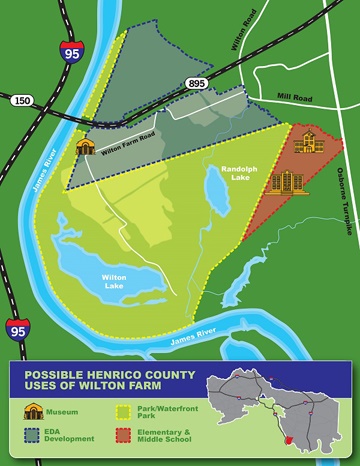
2. Wilton Farm as seen from the air.
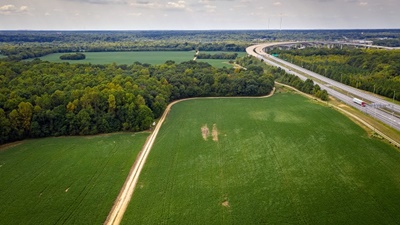
3. View of the landscape from Mill Road by the farm entrance.
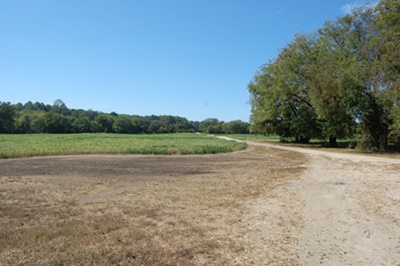
4. Entry to Wilton Farm on Mill Road.
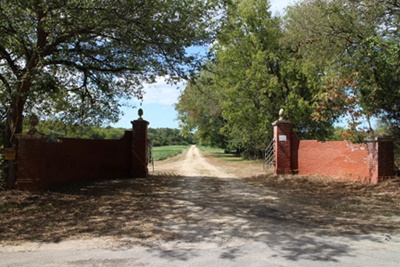
>Back to Top<
Multi-million Dollar Facelift for a Sixty-year-old
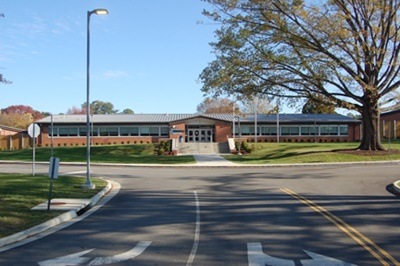
Tuckahoe Middle School at 9000 Three Chopt Road is celebrating its 60th year of educating children of Henrico county. The school's "present" is a 30-million-dollar renovation.
>Back to Top<
December Quarterly Meeting
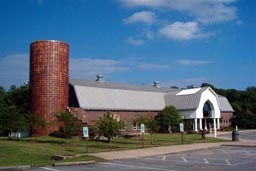
Our next meeting is scheduled for Sunday, December 1st, at 2:30 p.m.
It will be held at Dorey Park & Recreation Center, which is located at 2999 Darbytown Road, Henrico, VA 23231.
Our speaker will be David M. Sacks, Community Development Manager with the Henrico Department of Community Revitalization. He will be speaking about the Highland Springs Historic District and other revitalization projects in Henrico County.
See you there!
>Back to Top<
In Memorium
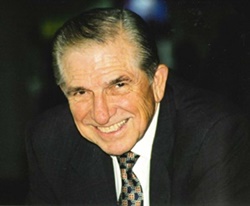
The Henrico County Historical Society extends its deepest sympathy to the family of Dr. E. Bruce Heilman, former president of the University of Richmond, who passed away on 19 October 2019. Dr. Heilman served as the keynote speaker for the 2017 HCHS Homefront Tribute.
>Back to Top<
Inventive Henricoans
When we considered the pen holder in the last issue, we were surprised to find that nothing seemed too simple to earn a patent. Well, examining patents by Henricoans and others, we find that position to be completely untenable. Witness Dekran Daughley's Shaving Gauge. Overlooking the simple use of a mirror image and the shaver's vision to shave effectively, Daughley offers a guide to assure matching lengths of one's sideburns. Had late night television been available in 1924, this could have been a prime prospect for regular TV spots.
It is interesting to note that Daughley offers his invention for "those who shave themselves." While we do not lack for products of dubious value today, there is something appealing about an age in which the daily chore of shaving was often provided by someone else.
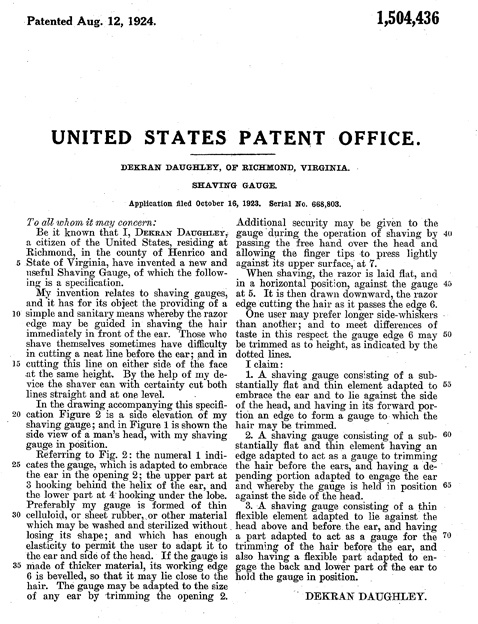
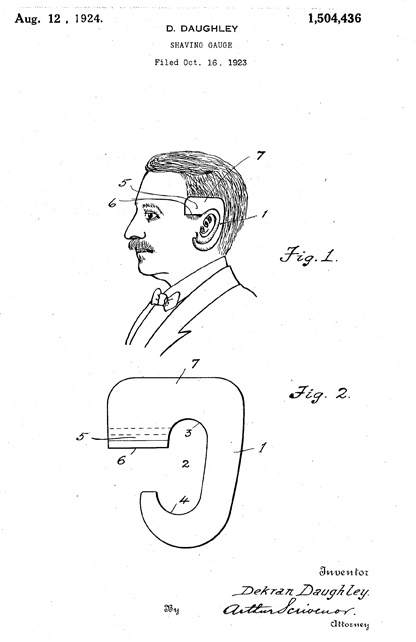
>Back to Top<
Getting an Education on The Three-Chopped Road at The Chiswick School
Growing up in the 1950s on Forest Avenue just down from Three Chopt Road, my friends and I regularly scaled the barbed wire fence around Franklin Farms so that we could wander in the pasture, explore the woods, sleigh ride down the hills or catch turtles, tadpoles, lizards and any other creatures that would interest small boys.
It was impossible then to imagine the transformation that land and adjoining properties would undergo in the coming years, accommodating the Kroger Office Center, an apartment complex, hospital space, and school grounds. It is hard enough to think about it today, but at least a portion of the land was preserved by Henrico County as Cheswick Park.
The park takes its name from the late eighteenth century farmhouse that originally anchored the property and was sold in 1973, moved 500 yards west and closer to Three Chopt Road, and restored. Appropriately, it's just down the road from Freeman High School, Ridge Elementary School, and Tuckahoe Middle School because in the years before the Civil War, the house, then known as "Chiswick," served as a school.
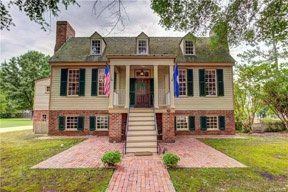
Cheswick House today, in image to left.
At the time, it was the home of Rev. George G. Exall, his wife Angelina Pierce Exall and their children. Exall was a Baptist minister who was born in Guilford, England on 4 July 1816, and as a boy had been bought to America by his father, also a minister.
In the 1840s, he was living in Richmond, and on 1 May 1848, he purchased the 128-acre parcel "in the upper end of Henrico County and lying on the North side of the Three Chopt Road" for $2,400 (Henrico County Deed Book 5, p. 279). It is likely that it was Exall who gave the farm its name, taking it from the Cheswick are of London.
It is hard to say when he opened the school but in a 4 March 1857 Daily Dispatch ad under the heading "THE CHISWICK SCHOOL," he notes that he is "an experienced teacher and accredited as 'apt to teach'" and that he "has re-opened his CLASSICAL and ENGLISH SCHOOL, at his residence, 7 1/2 miles west of Richmond." He goes on to say "The location is proverbially healthy; the discipline will be PARENTAL and CHRISTIAN." It is interesting that he says board for "youths of both sexes" was available at Chiswick and in the neighborhood because later ads only solicit sons as potential students.
An ad for the next academic session at Chiswick appears in the 2 September 1858 Daily Dispatch, and it gives us information about the academic year of the times and the cost of education. The session would run from October 1 to August 1 with a one month break at Christmas, and depending on the grade, tuition would range from thirty to forty dollars. Additionally, "Board, including table, room, bed, fuel, lights, and washing" would cost an additional $12.50
per month with half payable in advance. Relative dollar value comparisons vary widely, but that would appear to be roughly $900 to $1,200 for tuition and about $370 per month for board.
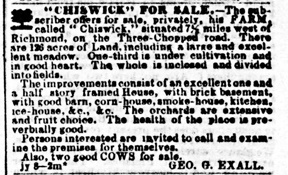
Perhaps, Rev. Exall was somewhat disappointed by the prospects of the school because almost immediately, after 1858-59 session, he offered the property for sale. The 3 August 1859 Daily Dispatch carries an ad offering "'CHISWICK' FOR SALE" (reproduced left). It touts the quality of the dwelling, outbuildings, orchards, and fruit, and adds that "The health of the place is proverbially good."
Less than a week later (16 August 1859), the same paper printed a amall article praising fruit from the Chiswick orchards - sort of a nineteenth century type of product placement. Entitled "Fine Peaches," the article anounces that "The Dispatch is under obligation to the kind courtesy of the lady of Rev. George G. Exall, for a lot of the finest peaches it has ever seen, a large number of them being over nine inches in circumference. They are from 'Chiswick,' the beautiful farm of Mr. E. about 7 1/2 miles west of the city, and are among the fruit of an orchard containing over 400 trees. Of delicious flavor, extraordinary size and color to delight the eye of a painter, our present is most acceptable, and the estimable donor has our thanks."
Whether or not it was a conscious plug for the sale, it did not work. The same ad for the property ran regularly through September 3, and then on 8 September 1859, an ad for "THE CHISWICK SCHOOL," declared, "The subscriber has yielded to the advice of his friends to withdraw Chiswick from the market and resume the duties of his CLASSICAL AND ENGLISH SCHOOL." Exall's stated goal was "the improvement of his pupils, in preparing them for business or college, to merit the continuance of their patronage." He offers his "city friends, especially, a HOME for their sons in his own family; and he buttresses his earlier claim of the healthful atmosphere of the site by adding, "The well water is found by analysis by Dr. Jas. B. McCaw, Professor of Chemistry in the Virginia Medical College, to possess valuable medicinal properties." This session would cost $25 to $50 with board at the earlier price, and it would run from October 5 through July 15 with two weeks off at Christmas.
The last of announcements for upcoming sessions of the Chiswick School appear in 1862 papers, and it is unclear whether or not the 1862-63 session was held. At any rate, Exall and his family left Henrico sometime before 1866. An ad in the 6 July 1866 Daily Dispatch announces the auction of a "FARM OF ONE HUNDRED AND THIRTY-ONE ACRES, CALLED CHISWICK, IN HENRICO COUNTY" and identifies Rev. Exall as the former owner. By that time, Exall was apparently in Kentucky, where the 1870 census finds him with his family. He lived in Paducah, Kentucky, until his death on 7 July 1897 at the age of 80.

Chiswick, circa 1910. This photo of the farmhouse in its original shows how it likely appeared when it had been put up for auction forty years before.
Having spent so many enjoyable hours on that land, I can well imagine those city boarders finding a near idyllic setting at Chiswick, and I like to think they enjoyed spending free time roaming the pasture and woods seven and a half miles west of the City of Richmond.
Joey Boehling
>Back to Top<
Hunting at Chiswick
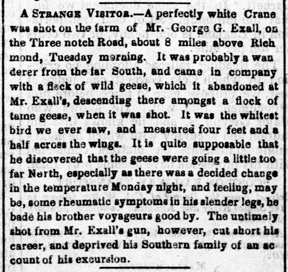
Although the bird was not an albatross and Rev. Exall not an ancient mariner, this rather whimsical account in the 14 July 1853 Daily Dispatch of the good minister's hunting experience did reflect the Bowery prose of the Romantics who were popular at the time and the Romantic propensity for presenting nature and its creatures in human terms.
The account uses first person, suggesting that the reporter was part of the hunting party; and the inclusion of this seemingly insignificant story suggests that Rev. Exall had connections and some standing in the community.
>Back to Top<
On the Wagon
Henrico County presently runs over 500 school buses, thereby eliminating an age-old hardship nostalgically voiced by those of earier generations - the necessity of walking miles and miles to school and back each day in all types of weather uphill both ways.
After 1907, this complaint was moot. The 4 February 1907 Times-Dispatch announced,"BOARD TO RUN BIG WAGON FOR HENRICO SCHOOL CHILDREN" and explained that "Pupils Will Be Hauled Distance of Five Miles and Then Taken Home Again." The wagon would run "from the Chickahominy neighborhood or beyond, for a distance of about five miles to Highland Spring.
The concept of school wagons caught on; and by 1915, compulsory attendance in Virginia was only necessary if one was "living more than 2 miles from nearest public school or more than 1 mile from the line of a public free school wagon route" (Child Labor Legislation in the United States, U.S. Department of Labor, 1915).
Highland Springs Graded and High School, 1907. This newly opened school (No. 5 on the route) benefited from the county's institution of school wagons for transportation as did Varina (seen at the bottom).
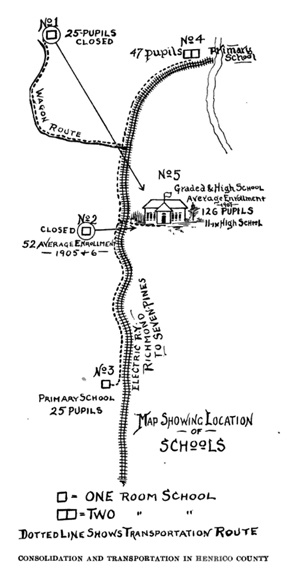

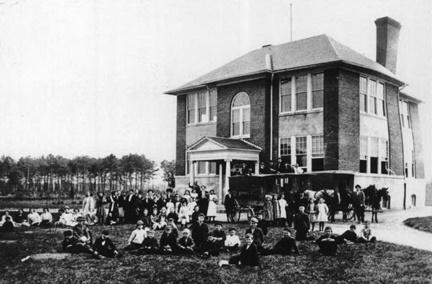
>Back to Top<
Now You Know
Storing the pins that helped you ... Hold on to your hat.

Congratulations to Terri Trembeth, Ann Jackson, Delores Duncan, and Haywood and Mary Jo Wigglesworth, all of whom correctly identified the "What do you know?" item from the last newsletter. It's a ceramic hat pin holder, an essential in storing the well-dressed Victorian woman's collection of hat pins whose heads could be decorated in almost any way imaginable. Typically 6 to 8 inches long, they held the lady's hat in place by securing the pin in the hair.
But there was the dark side to these implements, too. According to Karen Abbott ("The Hatpin Peril," Smithsonian.com, 24 April 2014), on 28 May 1903, Leon Blaker, a young lady from Kansas, was touring New York City. She became troubled by the actions of a gentleman in the stagecoach, so she took her nearly twelve-inch-long hatpin and jabbed it into the man's arm. He fled at the next stop. Similar stories involving "mashers" began appearing in newspapers across the country. Stories of "hatpin peril" also began to circulate, including one of a young girl playfully thrusting her hatpin at her beau, accidentally and fatally piercing his heart. Or there was the New York streetcar passenger who was accidentally pricked in the ear by a stranger's hatpin, fell into a coma within a week and died.
By 1920, the "peril" had led Chicago's city council to propose a ban on hatpins longer than nine inches and to impose a fifty-dollar fine on violators. After it passed by a 68 to 2 vote, other cities passed similar legislation.
By World War I, the outrage subsided with the rise of bobbed hair and cloche hats.
1. Wide Variety. This hatpin collection illustrates a small part of the range of hatpin styles.

2. "The Weaker Sex," Charles Dana Gibson's 1903 whimsical sketch shows four young ladies observing a tiny man through a magnifying glass, while one of the girls prepares to poke him with a "perilous" hatpin.
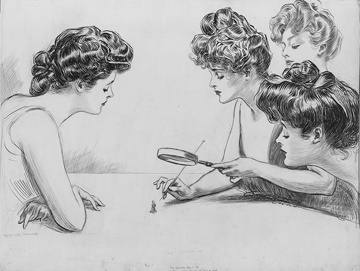
3. A pair of pins. A gibson girl wields two hatpins to secure her sizeable chapeau.

4. A masher foiled. An illustration in a 1904 San Francisco Sunday Call depicts a woman using her hatpin for self-protection.
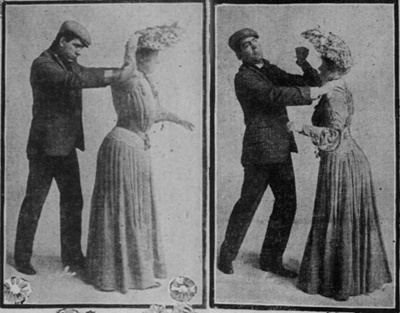
>Back to Top<
What Do You Know?
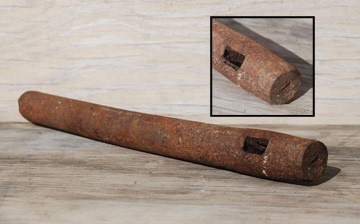
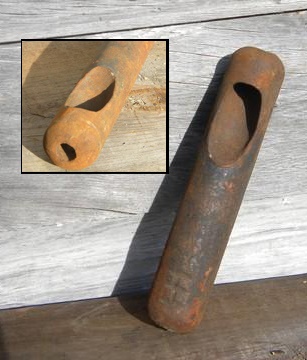
The two iron objects seen left both serve the same purpose. The one at the top is 11 1/2 inches tall and 1 1/2 inch wide. The one at the bottom is 7 1/2 inches long and 1 1/2 inches wide. The inset details show that each has a hole in the top that connects with the opening in the side.
Do you know what they are?
Email your answers to
jboehling@verizon.net.
If you have an unusual object that you think we might be interested in for this quarterly feature, let us know. We'd love to hear from you.
>Back to Top<
News 2019: Fourth Quarter
First Quarter | Second Quarter | Third Quarter
Home | Henrico | Maps | Genealogy | Preservation | Membership | Shopping | HCHS
|











